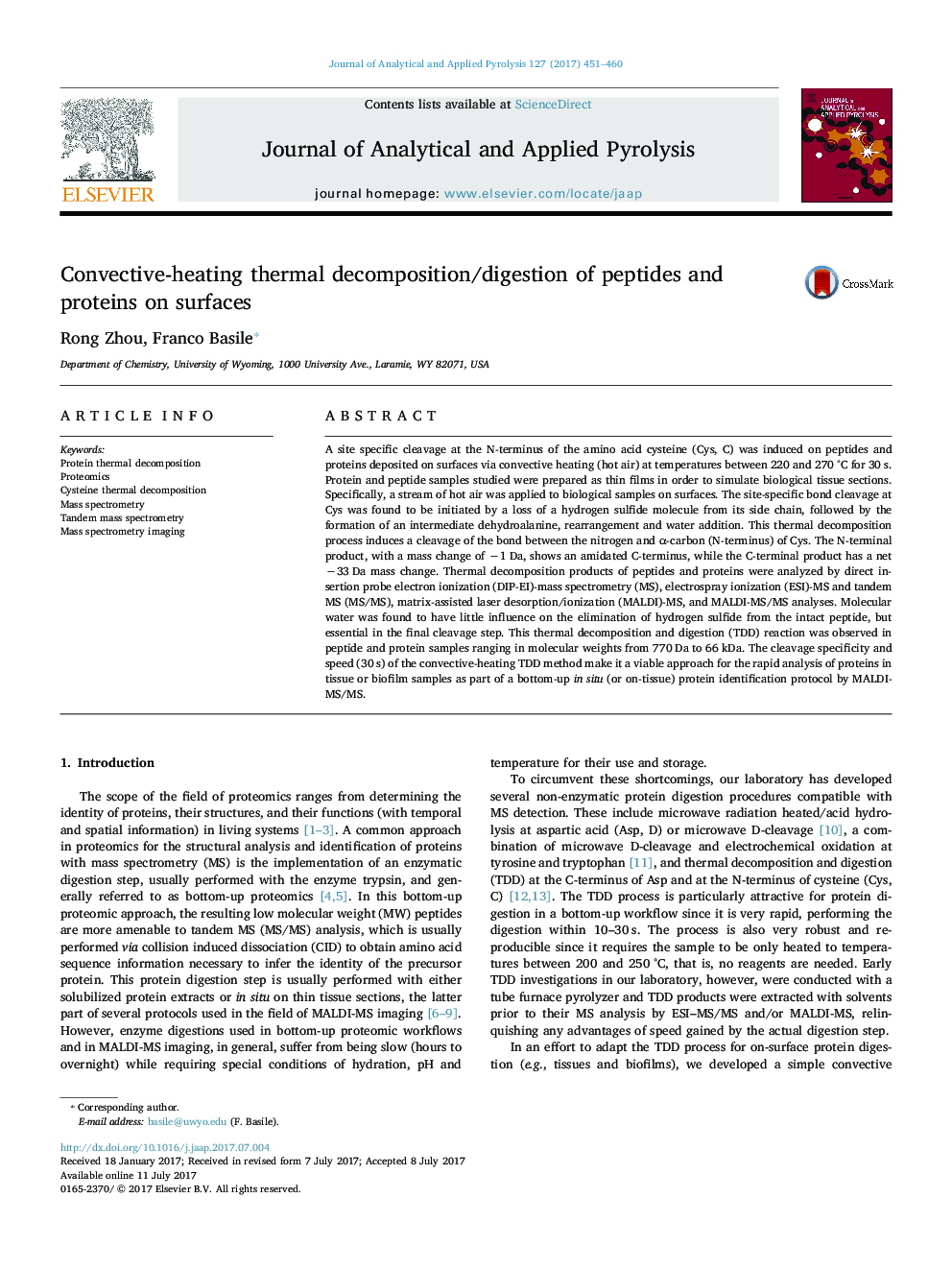| کد مقاله | کد نشریه | سال انتشار | مقاله انگلیسی | نسخه تمام متن |
|---|---|---|---|---|
| 5134463 | 1492950 | 2017 | 10 صفحه PDF | دانلود رایگان |

- Rapid (30Â s) convective-heating thermal decomposition of biomolecules in biofilms.
- Site-specific cleavage of peptide bonds at aspartic acid and cysteine in peptides and proteins in simulated biofilms.
- Detailed thermal degradation mechanism for peptide bond cleavage at the N-terminus of cysteine.
A site specific cleavage at the N-terminus of the amino acid cysteine (Cys, C) was induced on peptides and proteins deposited on surfaces via convective heating (hot air) at temperatures between 220 and 270 °C for 30 s. Protein and peptide samples studied were prepared as thin films in order to simulate biological tissue sections. Specifically, a stream of hot air was applied to biological samples on surfaces. The site-specific bond cleavage at Cys was found to be initiated by a loss of a hydrogen sulfide molecule from its side chain, followed by the formation of an intermediate dehydroalanine, rearrangement and water addition. This thermal decomposition process induces a cleavage of the bond between the nitrogen and α-carbon (N-terminus) of Cys. The N-terminal product, with a mass change of â1 Da, shows an amidated C-terminus, while the C-terminal product has a net â33 Da mass change. Thermal decomposition products of peptides and proteins were analyzed by direct insertion probe electron ionization (DIP-EI)-mass spectrometry (MS), electrospray ionization (ESI)-MS and tandem MS (MS/MS), matrix-assisted laser desorption/ionization (MALDI)-MS, and MALDI-MS/MS analyses. Molecular water was found to have little influence on the elimination of hydrogen sulfide from the intact peptide, but essential in the final cleavage step. This thermal decomposition and digestion (TDD) reaction was observed in peptide and protein samples ranging in molecular weights from 770 Da to 66 kDa. The cleavage specificity and speed (30 s) of the convective-heating TDD method make it a viable approach for the rapid analysis of proteins in tissue or biofilm samples as part of a bottom-up in situ (or on-tissue) protein identification protocol by MALDI-MS/MS.
125
Journal: Journal of Analytical and Applied Pyrolysis - Volume 127, September 2017, Pages 451-460